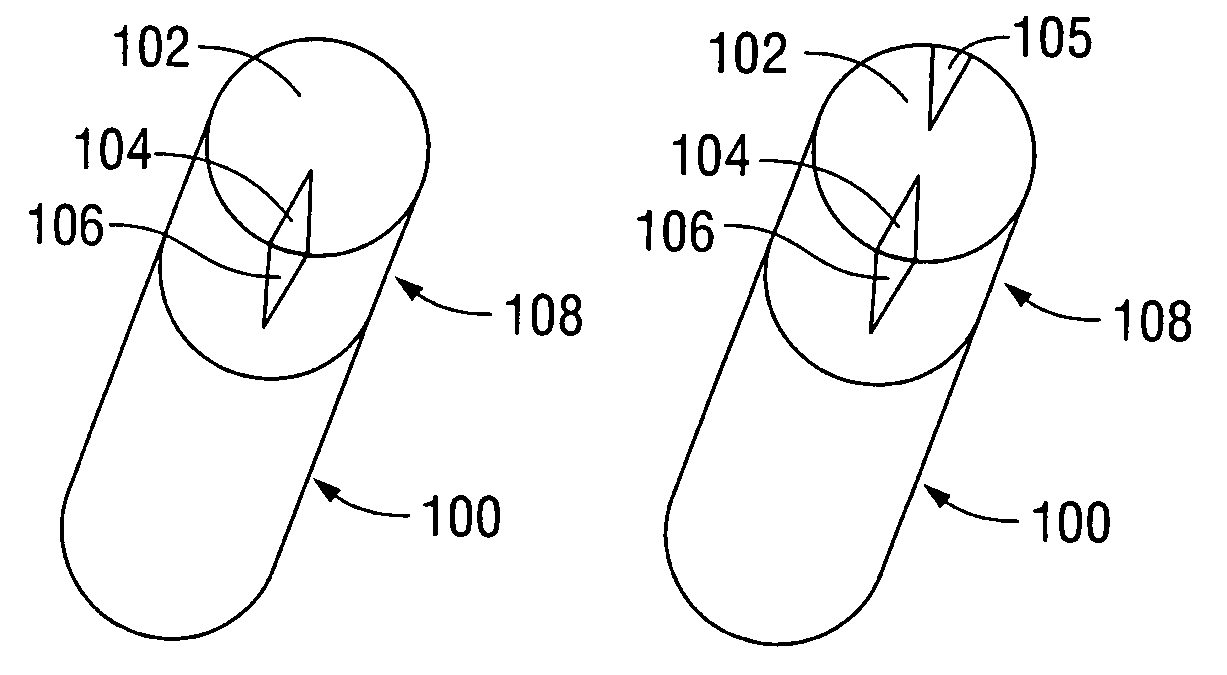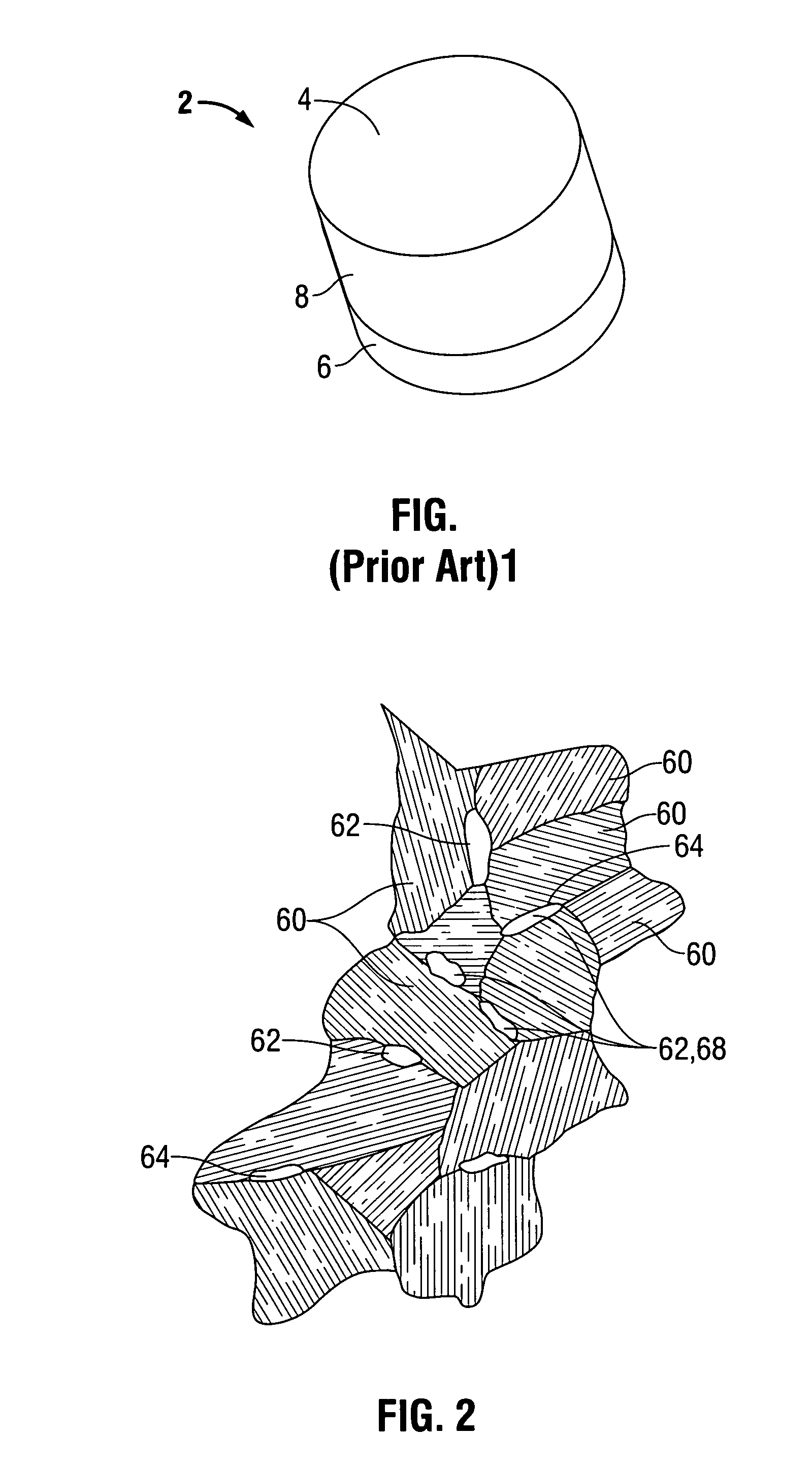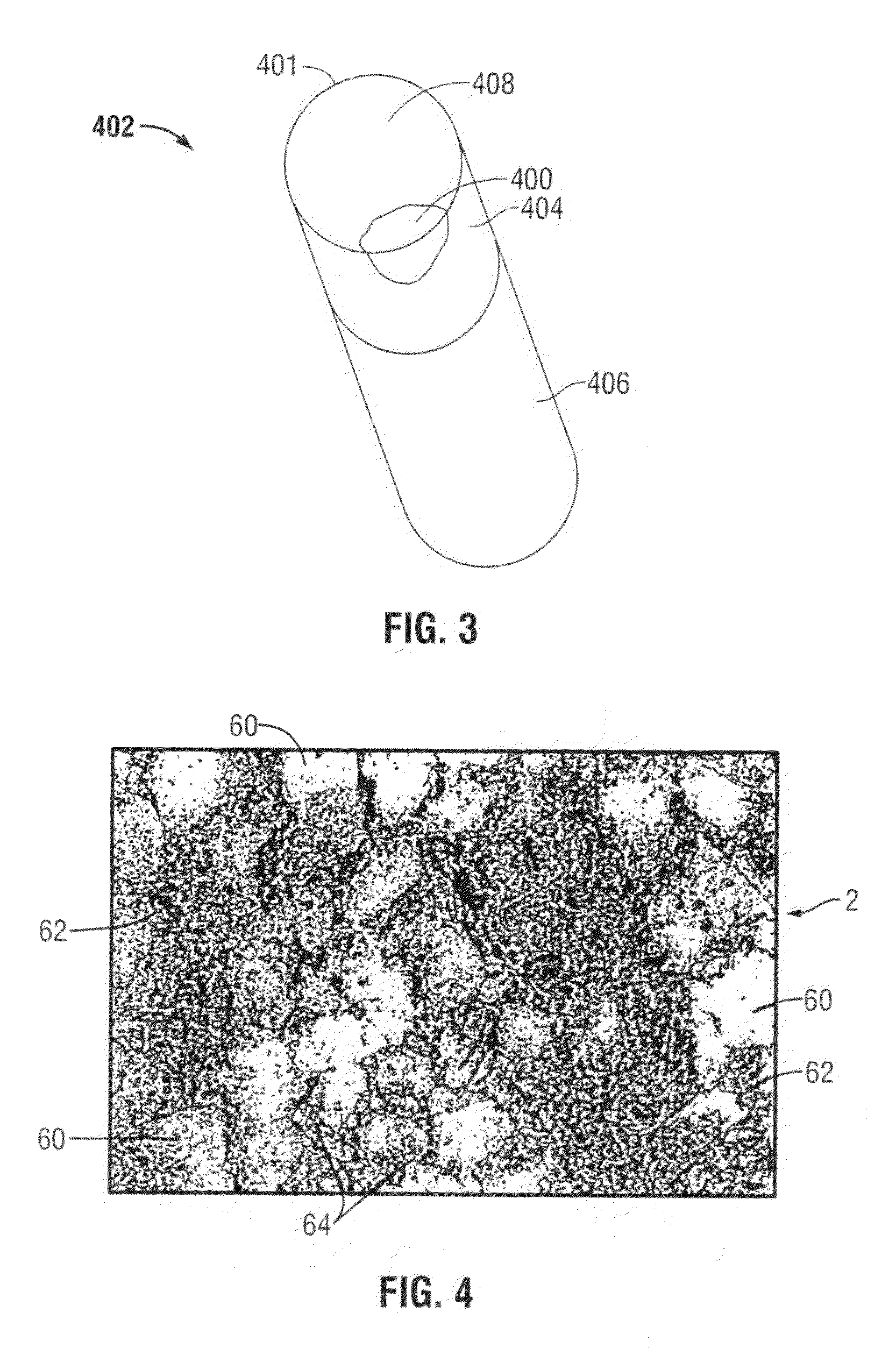Method and apparatus for selectively leaching portions of PDC cutters used in drill bits
a technology of pdc cutters and drill bits, which is applied in the direction of cutting machines, layered products, pigmentation treatment, etc., can solve the problems of imposing a limit on the maximum useful operating temperature of the element, assembly is subjected to very high temperature and pressure, and the element may be subject to thermal degradation
- Summary
- Abstract
- Description
- Claims
- Application Information
AI Technical Summary
Benefits of technology
Problems solved by technology
Method used
Image
Examples
Embodiment Construction
[0050]The polycrystalline diamond or compact (PDC) element 2 of the present invention is shown in FIG. 1. The PDC element 2 has a plurality of partially bonded superhard, diamond or diamond-like, crystals 60, (shown in FIGS. 2 and 4), a catalyzing material 64, and an interstitial matrix 68 formed by the interstices 62 among the crystals 60. The element 2 also has one or more working surfaces 4 and the diamond crystals 60 and the interstices 62 form the volume of the body 8 of the PDC element 2.
[0051]It has been known for some number of years to leach PDC cutters to remove the cobalt (the metallic phase) of a PDC cutter matrix by immersing portions of the cutter into an acid solution. This is typified by the above-referenced patents, and earlier, by the Sumotomo Japanese patent publication and by the General Electric patent. The present invention contemplates the use of drill bits which already have in place the PDC cutters, for example, by brazing or otherwise the cutters in the poc...
PUM
| Property | Measurement | Unit |
|---|---|---|
| temperatures | aaaaa | aaaaa |
| thermal stability | aaaaa | aaaaa |
| impact strength | aaaaa | aaaaa |
Abstract
Description
Claims
Application Information
 Login to View More
Login to View More - R&D
- Intellectual Property
- Life Sciences
- Materials
- Tech Scout
- Unparalleled Data Quality
- Higher Quality Content
- 60% Fewer Hallucinations
Browse by: Latest US Patents, China's latest patents, Technical Efficacy Thesaurus, Application Domain, Technology Topic, Popular Technical Reports.
© 2025 PatSnap. All rights reserved.Legal|Privacy policy|Modern Slavery Act Transparency Statement|Sitemap|About US| Contact US: help@patsnap.com



